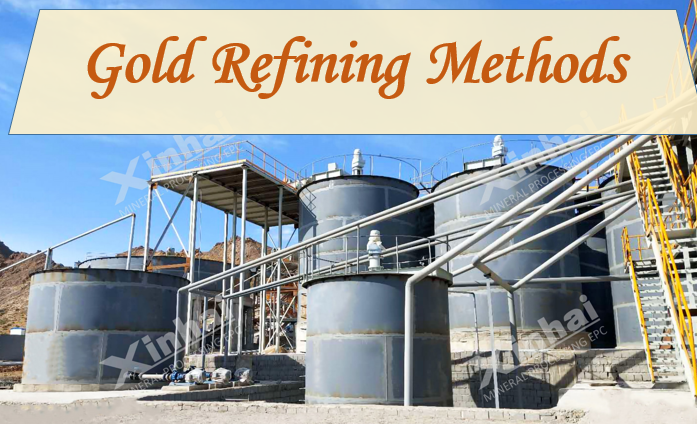Gold Refining Methods: Unveiling the Techniques for Purity
2024-10-09 Xinhai (1577)
2024-10-09 Xinhai (1577)
If you have any questions, please contact us through the following ways, we will give you more and better assistance!

Introduction
Gold, a precious metal with significant economic value, is widely distributed across China, offering abundant resources for extraction. The art of gold refining is essential to maximize the extraction of gold and create substantial value for society. This article delves into the various methods used in gold refining, exploring the processes and equipment involved in transforming raw gold into a high-purity product.
Gravity Separation
Principle: This traditional method exploits the difference in density between gold and gangue minerals. It is one of the oldest techniques still in use today.
Process: Gold is first recovered through a grinding circuit, primarily targeting coarse, free gold particles. It is mainly used for placer gold but requires further refining through magnetic separation or electrostatic separation to ensure purity.
Advantages: Low pollution and cost. However, it has a lower gold recovery rate and compared to other methods.
Flotation Method
Application: Widely used in the concentration of gold ores, this method is effective for gold particles around 0.84mm in size but is limited to ores of relatively poor grade.
Process Focus: The selection of appropriate collectors is crucial, offering simplicity and convenience in operation, though finding the right collector can be challenging.

Amalgamamation:
Effectiveness: An effective method for recovering coarse, free gold.
Process: Mercury is used to coat gold particles, forming an amalgam, which is then heated to evaporate the mercury and obtain crude gold.
Advantages: High recovery rates of over 50%, efficient, and low-cost, primarily used for high-grade gold ores. However, it significantly impacts the environment.
Thiosulfate Process
Principle: Differentiates gold from other materials based on their physical properties, inducing various chemical reactions.
Process: Tailored treatments are created for different types of gold ores, using specific chemical reagents to extract highly pure gold.
Advantages: Non-toxic, high recovery rates, and low cost. It has a mature system in gold refining, with near-perfect gold color.
Iodine Process:
Nature: A non-toxic refining method with significant potential for development.
Process: Iodine reacts with gold to form stable complexes, enabling refining even in low-concentration environments.
Advantages: Clean, simple operation, and uses iodine salts, which are saturated iodine solutions containing table salt, to react with metal sulfides and recover leached materials with activated carbon.
Chlorination Process
Significance: An important cyanide-free refining method and one of the earliest chemical metallurgical techniques.
Process: Chlorine gas is introduced into finely ground ore, reacting to form gold chlorides, which are soluble in water and precipitated using elements like H2S or FeSO4.
Challenges: Still in the research phase, aiming to find cheap, regenerable chlorinating agents to reduce refining costs and corrosion from chlorinating agents on equipment.
Cyanidation Process
Prevalence: Used in nearly 60% of metallurgical processes in China.
Process: NaCN solution is used to soak finely ground gold ore, with appropriate ventilation and pH adjustment using NaOH or quicklime to separate elemental gold using solutions with a pH of 11-13.
Advantages: Over 90% production rate, simple operation, strong adaptability, and low cost. However, it is highly toxic, and improper post-refining treatment can lead to severe environmental pollution.
Polysulfide Process:
Efficiency: High leaching rates for sulfidic gold concentrates, but industrial-scale application is not yet mature and requires further development and exploration.
Conclusion
Gold refining is a multi-stage process that combines physical and chemical methods to produce high-grade gold suitable for various applications. The choice of equipment and process flow is crucial for optimizing gold recovery and minimizing environmental impact. As the demand for gold continues to grow, the refining industry must innovate and adapt to meet these challenges.